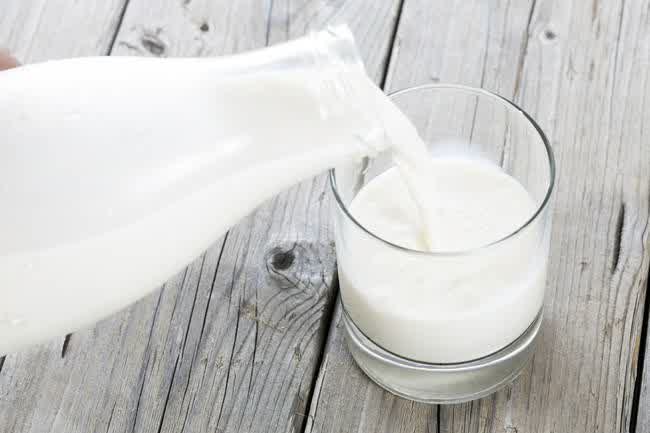We often get confused with the facts and myths whether something is actually good or bad for our body. This confusion also applies to the food we consume daily, especially because food is directly related to our health. How can we know whether these myths about food are a fact or just a mere lie in the first place?Just by considering at our small knowledge of the nutritional content of food, it is not that surprising that most of us are not being really sure whether the food that we eat in our daily meals is healthy or not. As far as these myths go around here and there, luckily many of those are proven wrong. Now is the time for revelation, these are 14 facts about food to get our facts straight!
- Popular myth: Chicken skin is a no good.
People believe that chicken skin is no good since it is greasy and actually tastes good. Come on! Science has proven and goes against this myth by exposing the fact that chicken skin is actually consists of 55% of monosaturated fat, which is considered as heart friendly.
- Popular myth: Drinking whole milk is bad for your heart

Even though whole milk has a high content of fat, latest research indicates that fats in dairy products do not increase the risk of cardiovascular disease, in fact it benefits health instead. In conclusion, it is not only good for your heart, but also your body.
- Popular myth: craving for something is the way your body communicates.
Every time we are craving for something to eat or drink, we always think that our body needs it because of an inadequacy. FYI, that is not true. This desire to eat kind of food was more likely linked to our emotional state.
- Popular myth: We need fiber. More of it!

Fiber is indeed an important content of foods. Getting enough of fiber is important to our digestive system. Therefore, it is not like we have to eat extra fibers enhanced cereals, snack bars, or beverages for our daily intake. Eating regular proper meals with enough fruit and veggies is enough for our body.
- Popular myth: regular salt= yes; sea salt= OH YEAH!

This is a completely misconception. While people tend to choose sea salt instead of regular salt, actually they have the same amount nutrition for our daily intake. Since it may not be as processed, both may have the same amount of sodium.
- Popular myth: scales are good for determining fat loss in diet.
This myth goes simply wrong. When we are begin to work out, we started to lose some fat and gain muscle’s volume. You don’t have to be disappointed when seeing those numbers on scales stays as they are, or even go up more than before. Our muscles weigh more than fat. While exercising, our body may shed some of our fat, but gaining up muscles volumes!
- Popular myth: all the nutrients of a potato are in its skin.
It is indeed true that potato skin is rich of vitamins and other nutrients, but it only has 20% of the entire nutrient in the potato itself. Let’s eat whole of it to get the whole 100% nutrients.
- Popular myth: helps you improve your eyesight
It is true that carotene may help us maintaining our eyes and vision, but it doesn’t mean to improve the eyesight to be better that it already is.
- Popular myth: low fat/fat free products are healthier than the regular ones.
The problem in low fat of free fat products is that the fat in it has been removed. In order to substitute the removed fat, these kinds of products usually contain excessive amount of sugar. I can be pure of artificial one, which is definitely not a healthy option either.
- Popular myth: Do not microwaves food! It will destroy all the nutrients in it.
If you are that person who is really concerned about getting most of the nutrient in our food, actually microwave is one of the good bet. Reheating food in microwave is one of the best ways to retain the vitamins and minerals in your food, if you are doing it right. Microwaving food can be dangerous if you are not using the proper material like a non microwave safe plastic or a plate made of some dangerous and unhealthy chemicals which could seep into your food. Here is a tip: you can use a small amount of water to steam your food from the inside so you will retain more nutrients more than any other cooking methods.
- Popular myth: Monosodium Glutamate (MSG) is no good.
Some people may having a terrible headache which is caused by MSG, based on the myth. Basically, it was more because of the reaction of MSG towards some of the food’s ingredients, but not all.
- Popular myth: We need to burn 3500 calories in order to lose one pound of body fat
Hmmm… how can we say about this? This is not technically incorrect, but there are so many variables in determining the exact calculation of it. We also need to know about how much exactly of that pound is the actual fat.
- Popular myth: Gluten free diet is good for everyone.
Well, gluten free diet is supposed to be for those who are gluten sensitive, or intolerant. We will not accomplish much if we are not one.
- Popular myth: high fructose corn syrup is evil.
Regular sugar and high fructose corn syrup actually have the same amount of glucose and fructose, which is both bad and unhealthy if consumed in large quantities of doze. Quit making a fuss over it, they are pretty much the same. It is actually depend on how much you use them for your daily intake.
